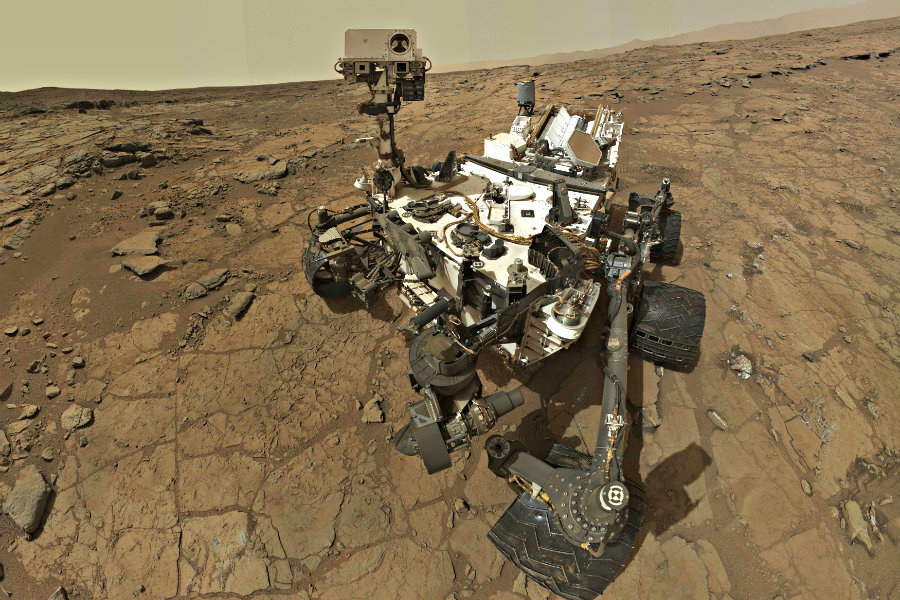Did Mars's crust contribute to its atmosphere?
Mars’s famously red surface is more than just a passive bystander to the dramatic changes that have occurred on the planet over time – instead, it likely influenced them, according to a new study by NASA researchers.
The study’s findings were made possible by the Curiosity rover’s information gathering Sample Analysis at Mars (SAM) array of instruments, which measured the levels of the gases xenon and krypton in the Red Planet's atmosphere. By tracking those gases, scientists say, they can also track Mars’s atmospheric changes over time.
Scientists are particularly interested in the balance of different chemical variations – or isotopes – of the two gases. By studying the ratios of the different variants, the researchers are able to infer details about how different elements have interacted with each other in the past. And the emerging story suggests that chemical interactions on the surface of the planet have helped shaped the chemical composition of the atmosphere.
Scientists have focused on the presence of xenon and krypton in the Martian atmosphere since the Viking missions of decades past. Those measurements have served as benchmarks for researchers analyzing data gathered by Curiosity.
The Curiosity mission, however, has also been able to gather a different set of measurements for scientists – concentrations of isotopes of both elements. Xenon alone has nine different isotopes, and by tracing those isotopes, scientists can make assumptions about the planet’s history.
Tests showed that certain xenon and krypton isotopes were more abundant on the Red Planet than others, leading researchers to believe that they were released from rocks in the regolith layer, or layer of soil and rocks near the planet’s surface.
The process is thus: when cosmic rays hit the regolith, scientists believe that they kicked off a process called neutron capture, which occurs when neutrons transfer from one element to another.
On Mars, for example, barium atoms in the regolith may have transferred neutrons to nearby xenon atoms after being struck by cosmic rays, thereby forming xenon isotopes called xenon 124 and 126. A very similar process occurs when bromine loses neutrons to krypton, forming krypton isotopes.
"SAM's measurements provide evidence of a really interesting process in which the rock and unconsolidated material at the planet's surface have contributed to the xenon and krypton isotopic composition of the atmosphere in a dynamic way," said study lead author Pamela Conrad in a NASA press release.
Impacts on Mars’s surface would then release those noble gas isotopes into Mars’s atmosphere. By the time that Curiosity performed its tests, using a technique called static mass spectrometry, isotope ratios were different than scientists had expected, based on previous tests and their knowledge of the Red Planet.
"The unique capability to measure in situ the six and nine different isotopes of krypton and xenon allows scientists to delve into the complex interactions between the Martian atmosphere and crust," said Mars Exploration Program lead scientist Michael Meyer. "Discovering these interactions through time allows us to gain a greater understanding of planetary evolution."
This is not the first time that rock testing by Curiosity has led scientists to interesting conclusions about the Martian atmosphere. This summer, NASA reported that the rover had found oxygenated manganese on Mars, a discovery that scientists say is significant because it means that the planet might have had a more oxygen rich atmosphere than was previously thought.
“This tells us that Mars has evolved very differently than we thought it did,” Nina Lanza, a researcher at Los Alamos National Laboratory told the Monitor in June. “We need to start looking for different types of minerals and other evidence about Mars’s past.”






